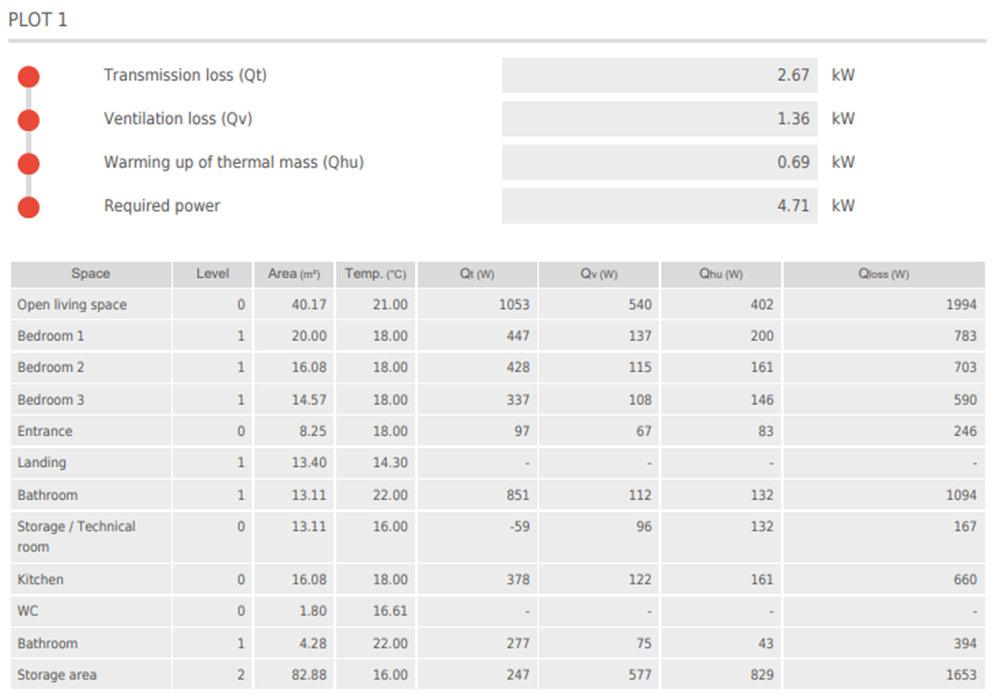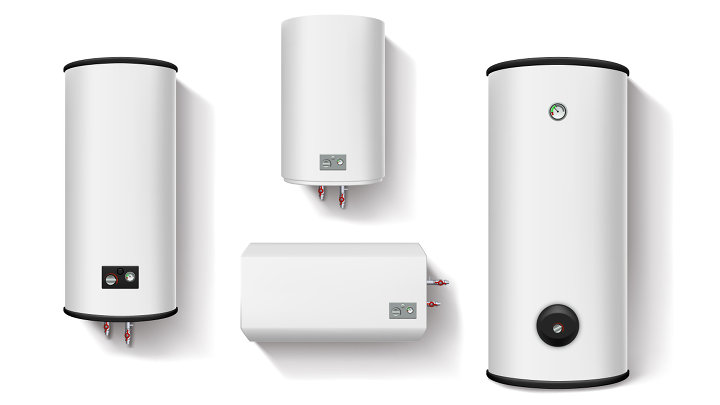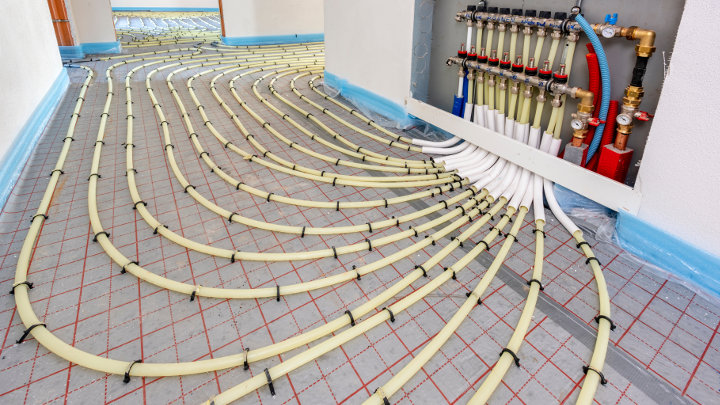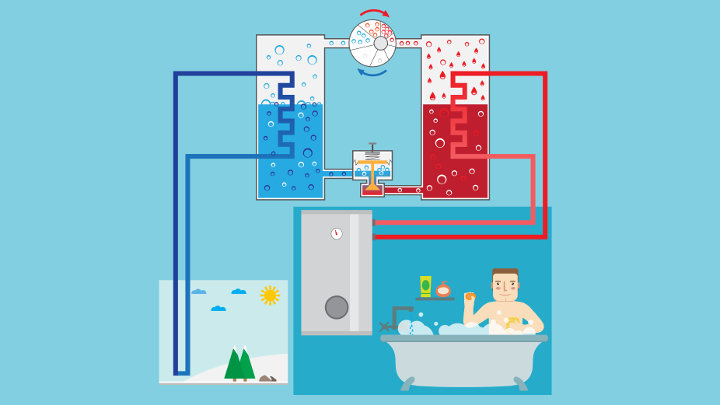
- 20-05-2025
- Joris Bracke
- 0 Comments
As we all know the principle of the operation of a heat pump is to transfer heat rather than directly generate it, and as such allows for the high seasonal coefficient of performances (SCOP) we have become accustomed to compared with traditional heating methods.
As Air Source Heat Pumps (ASHP’s) can very simply be described as a fridge operating in reverse, the SCOP of the system is determined by several main factors – the external ambient air temperature, refrigerant type and the water flow temperature of the system.
Initially, heat pumps were installed with R410a refrigerant – this was developed in the early 90’s as cheap solution to remove older refrigerants with high ozone depletion properties such as R12 and R22. Unfortunately there were some negatives – R410a is required to operate at high pressure and required thicker compressors and tubing, and could only be used in low temperature output heat pumps.
Since then, other refrigerants have been used, including R32 (Difluoromethane) which also offers higher SCOP at lower flow temperatures, and a greater efficiency than R410a.
These low temperature output heat pumps (circa 35°C) are perfectly adequate for recently built homes in the UK, where insulation values of the building envelope are very good, and infiltration rates are well controlled. However, according to Valuation Office Agency Data only 7% of homes in England were built in 2012 or later, and in Wales 5%.
Whilst some older homes can have additional insulation (for example cavity wall fill) retrofitted quite simply and cheaply, older solid wall properties are more difficult to improve thermally. This results in a high heat load which may be difficult to meet with a single low temperature heat pump, and can result in a tandem arrangement with two heat pumps, or a hybrid system which utilises a fossil fuel heat generator in combination with a heat pump.
However, this may all be about to change.
What has changed in Heat Pump technology?
One of the most common misconceptions about heat pumps which are frequently repeated in the media is that they are unable to heat water above 60°C.
Recent advances in R&D have delivered two new types of refrigerant for domestic air source heat pumps – R290 (Propane) and R744 (Carbon Dioxide). By using these refrigerants, ASHP’s can now provide domestic hot water at the same temperature as fossil fuel boilers with just one compressor which reduces energy consumption.
Both of these refrigerants have zero ozone depletion properties, and also offer extremely low Global Warming Potential (GWP) values when compared to other available systems.
R290 has an extremely low global warming potential (GWP) of 3, and is highly energy efficient as it requires less energy to reach and maintain the desired flow temperature. In addition, R290 heat pumps have a higher SCOP at lower temperatures which make them a better choice for colder climates which include the UK.
R744 has the lowest global GWP of all refrigerants (GWP of 1), and offers more power and efficiency at extreme cold temps (-18C), and the SCOP is not significantly affected by higher flow temperatures. In fact R744 heat pumps can achieve 50 – 80C flow temperatures.
A recent study by a Dutch organisation, TripleAqua, compared the SCoP of a A+++ R32 heat pump, and a European Heat Pump Association (EHPA) certified R290 heat pump using certified data.
At 35°C, the Seasonal COP (SCOP) of the R32 unit was 4.72, while the R290 unit had a SCOP of 5.66 at this temperature (a 21% improvement). At 55°C, the gap widens with the R32 unit showing a SCOP of 3.39 and the R290 one 4.48. This means the R290 unit is 34% more efficient at this temperature.
What Are High Temperature Heat Pumps?
High Temperature (HT) heat pumps have been designed to operate at 70-80°C, and can utilise the same size radiators as those fitted to fossil fuel boiler heating systems.
HT heat pumps have been found to run as efficiently as low temperature models. This is because the weather compensation controls fitted to the system call for lower flow temperatures the majority of the time. In other words, just because a high temperature heat pump is fitted, it does not mean it has to operate at a high temperature all the time which keeps running costs to a minimum.
How will this technology assist hard to heat homes?
The higher flow temperatures provided by older heat pumps came at the expense of a lower SCOP, and ultimately higher energy costs to the user. These heat pumps had two compressors to raise the temperature twice, and this used more electricity to achieve the higher flow temperature.
Alternatively, lower temperature heat pumps could be installed but in most cases this would require significantly oversized heat emitters, and most likely the flow and return pipework being replaced to accommodate the required higher flow rates.
By installing a high efficiency HT heat pump, this will minimise the likelihood of;
- having to change pipework,
- install oversized heat emitters,
- retrofit additional insulation to lower the heat demand of the building
- change the hot water cylinder to a heat pump specific type
Benefits include;
- faster installation due to less modifications to the heating system being required
- possible cheaper initial outlay costs
- no need to “boost” the hot water cylinder temperature for legionella
- simpler mode of operation for the end user (i.e. standard heating patterns)
How will I know if I need a HT Heat Pump?
Oversizing heat pumps will cause the heat pump to cycle on/off frequently, which will damage the motor. It also results in inefficiency by using more electricity, making the heat pump less sustainable and defeats the purpose of the installation.
Therefore it is key that the heat demand of the building is accurately calculated so that not only the heat pump is sized corrrectly, but also the heat emitters are also calculated to match the heat demand of the rooms.
The fabric construction of a building must be correctly ascertained so that the thermal properties can be accurately calculated. A site survey carried out by a suitably trained person will be able to ascertain this, and by using Government approved resources the U-Values can be obtained.
It is also important to use an appropriate heat loss calculation methodology which considers not only fabric losses, but also ventilation losses. BS EN 12831-1 provides a European (and UK) recognised approach to calculate the design heat load of a building, and also at room by room level.

Heat-Box uses the BS EN 12831 calculation methodology in its software to ensure users obtain the most accurate heat load calculations. It allows users to enter multiple floor, wall and roof types for buildings with different construction types, and provides the option of automatically selecting U-Values based upon the age of the dwelling. Users can also update U-Values if insulation has been added (for example cavity wall fill or additional loft insulation), or independently calculated values can also be entered.
For further information regarding the Heat-Box suite of software, please visit heat-box.co.uk to request a free trial, and also our contact details to discuss how we can work with you to meet compliance with the new Regulations.
Comments
No comments yet.







Make a comment